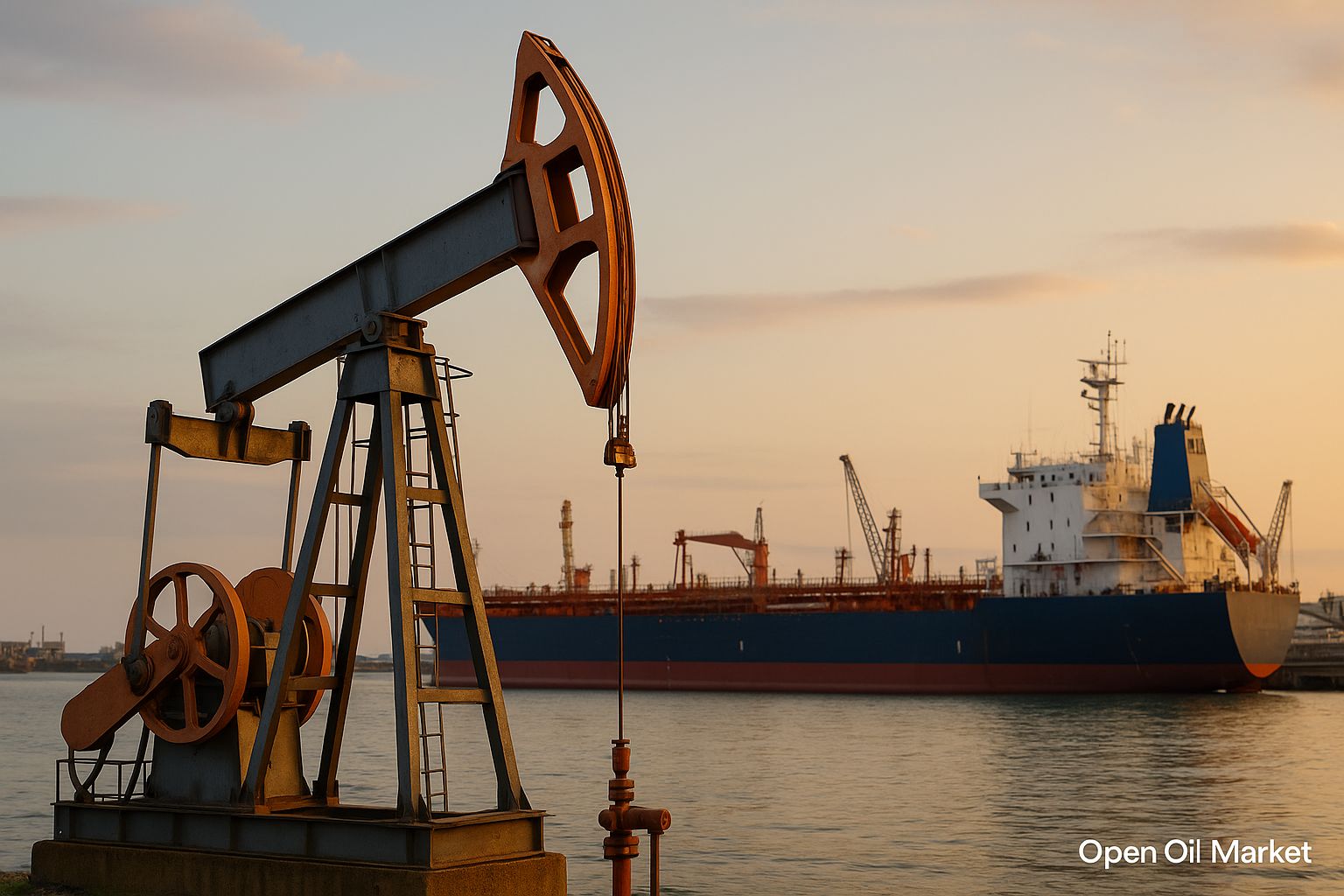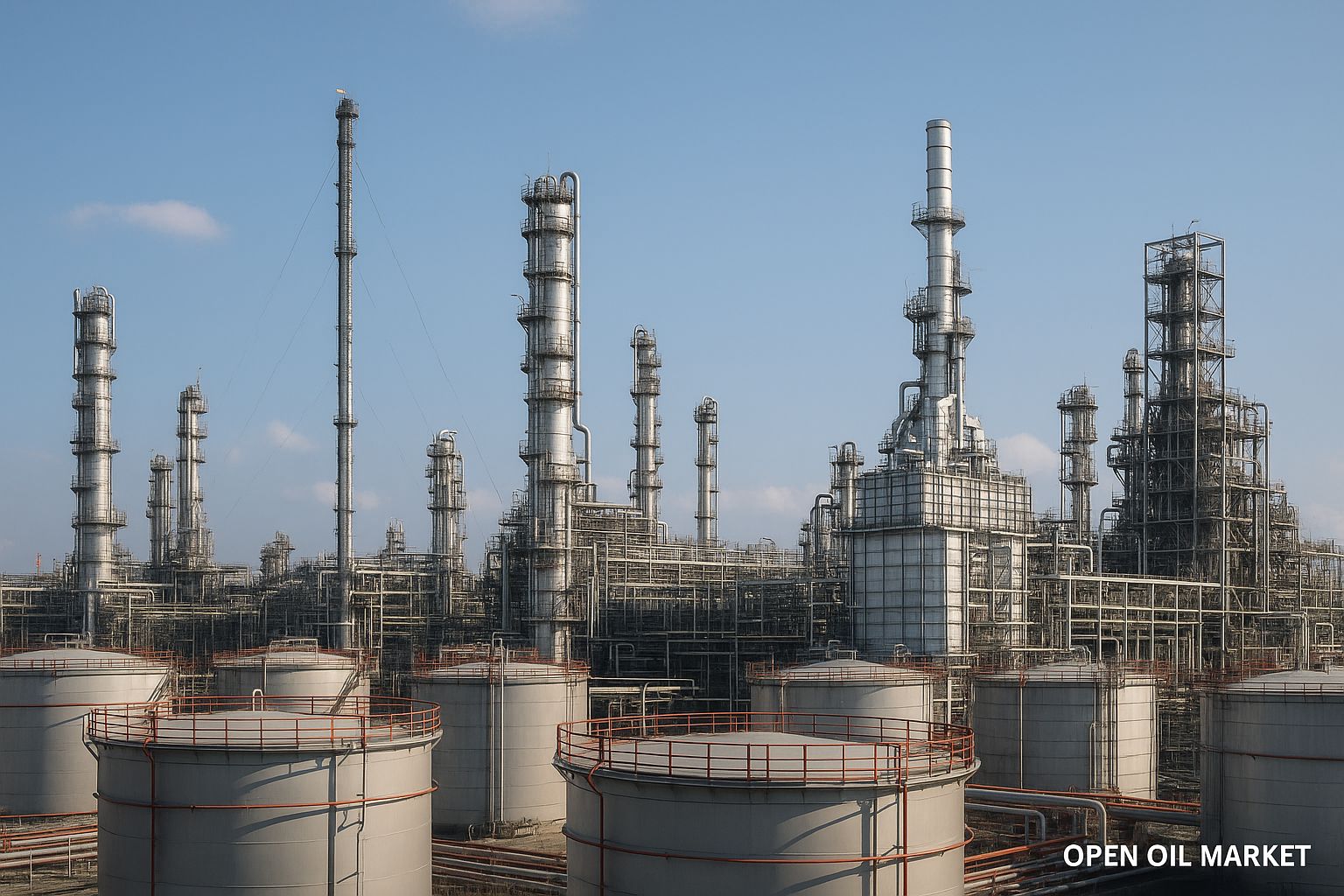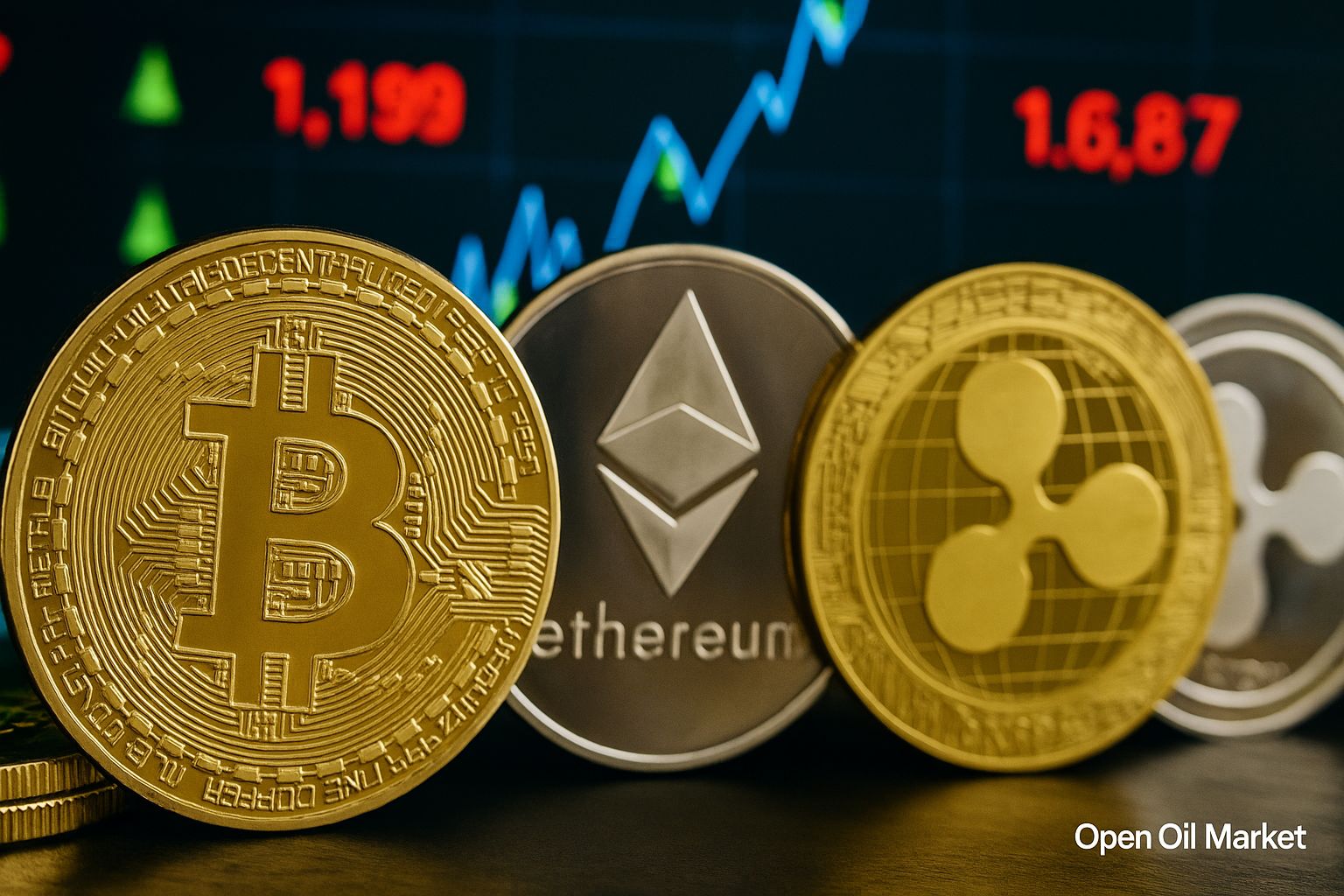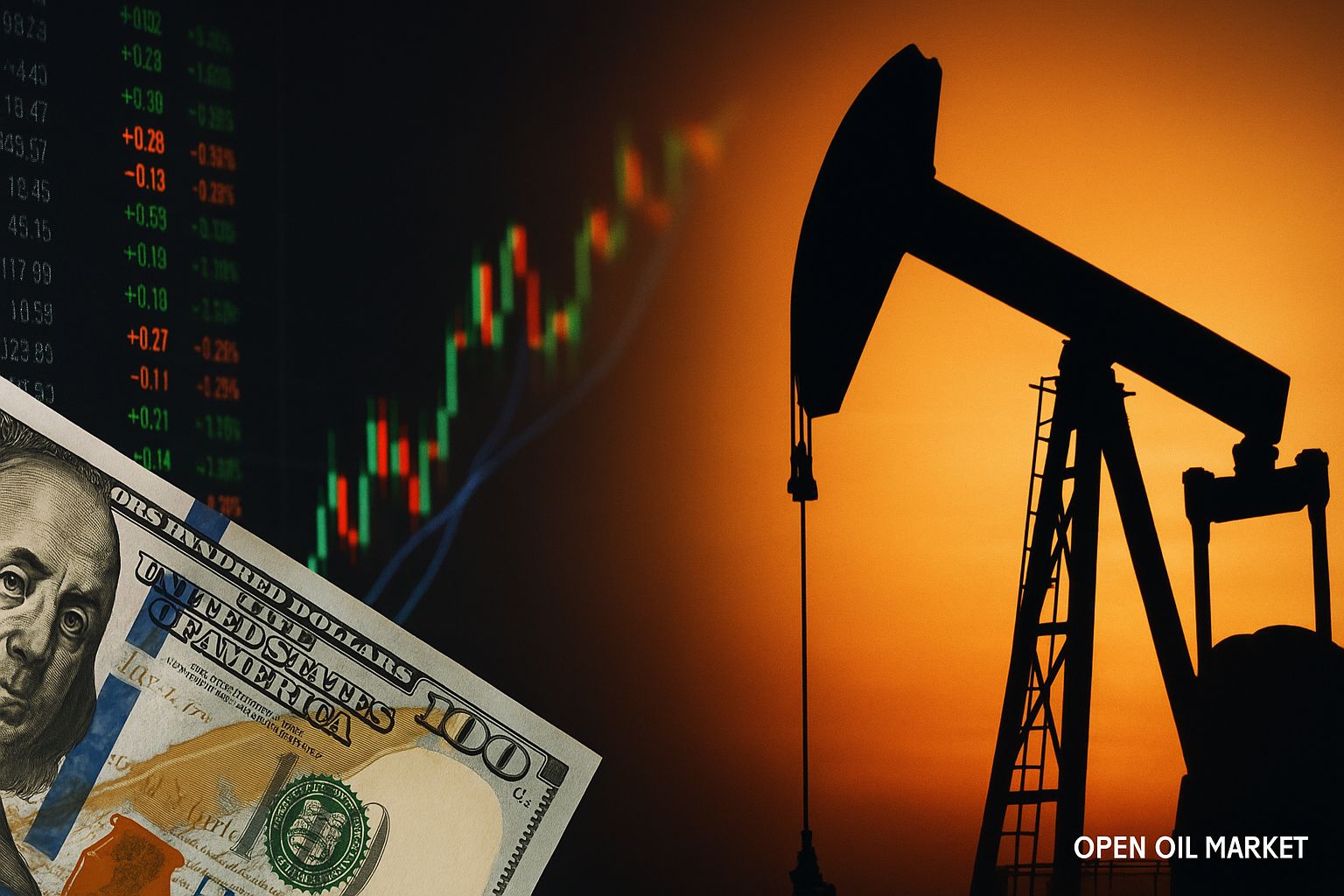
Energy Sector News – Sunday, August 3, 2025: Brent Around $73; Asia Emerges as Main Export Market for Russian Oil
As August begins, the global fuel and energy complex is showing moderate growth and signs of stabilization. Oil prices remain high, with Brent holding steady around $73 per barrel (the highest since late June) amid ongoing geopolitical risks and strong seasonal demand. The European gas market remains relatively calm due to record replenishment of fuel stocks in underground storage ahead of winter. At the same time, regulators and market participants are taking measures to maintain balance: as of August 1, the OPEC+ alliance has initiated a planned increase in oil production to avoid supply shortages, while the U.S. Federal Reserve’s decision to keep interest rates unchanged signals stability in macroeconomic conditions and supports investor optimism. In Russia, an emergency ban on gasoline exports remains in effect, aimed at cooling domestic fuel prices during the peak summer demand period. Additionally, structural changes are becoming evident: Asian countries have transformed into the key market for Russian oil, displacing Europe. Below is a detailed overview of key events and trends in the oil, gas, power generation, and other sectors of the energy complex as of August 3, 2025.
Oil Market: Brent Stable at Highs, Demand and Supply in Delicate Balance
Global oil prices ended the week near multi-week highs. The North Sea Brent blend is trading around recent peaks (~$72–73 per barrel, above the psychologically important mark of $72). U.S. WTI is holding steady around $69–70 per barrel. Several factors are contributing to the price increases:
- Trade truce and rising demand. Progress in trade negotiations between major economies has improved market sentiment. Washington and Brussels have reached a framework agreement that has avoided a new tariff war: agreements have been made to reduce duties and increase U.S. energy exports to Europe, bolstering investor confidence and heightening expectations for increased demand for oil and gas. Additionally, the U.S. and India have made strides in resolving trade disputes, easing global tensions. Meanwhile, the summer holiday and travel season supports elevated consumption of gasoline and jet fuel in major economies, further fueling oil demand.
- Geopolitical risks and sanctions. The U.S. administration is ramping up pressure on Moscow. At the end of July, President Donald Trump shortened the deadline for resolving the Ukraine conflict: an ultimatum (~10 days) expires on August 8, and the president indicated he is "unconcerned" about potential negative market reactions to new stringent measures against Russia. This pertains to the imposition of 100% tariffs on Russian exports and secondary sanctions against buyers of Russian oil and gas. The prospect of such moves maintains uncertainty and adds a risk premium to barrel prices. Moscow, for its part, has stated that it has no intention of altering its policy under external pressure, thus maintaining market tension.
- OPEC+ actions and rising production. OPEC+ countries are sequentially increasing oil supply. As of August, the official collective production quota has been raised by about 548 thousand barrels per day (slightly more than initially planned), and a similar increase is expected to be approved for September. The OPEC+ Joint Monitoring Committee has reaffirmed its commitment to agreements and readiness to increase production to prevent shortages in autumn – these signals restrain further price increases. Additionally, supply is growing outside OPEC+: for example, U.S. Chevron has received approval to expand production in Venezuela, which could return over 200 thousand barrels per day of new crude to the global market.
In sum, the impact of these factors keeps the oil market in relative equilibrium. Brent has stabilized within the range of ~$72–73 per barrel: the recent price surge is tempered by expectations of increased OPEC+ supplies. Despite the price rises over the past weeks, current levels are still 10–15% lower than a year ago – reflecting corrections following the peaks of the 2022–2023 energy crisis. Investors continue to monitor external signals: U.S.-China negotiations over trade disputes are ongoing, and the U.S. Federal Reserve maintained its rate following its July 30 meeting, which, along with reduced trade tensions, supports energy resource demand in the latter half of the year.
Commentary: As noted by Sergey Tereshkin in a recent RBC article, an unprecedented shift in the geography of Russian oil exports is occurring. If in 2021 about 34% of oil supplies from Russia were directed to Asia-Pacific countries, by the end of 2024, their share had risen to 63%. The share of European countries (including Turkey) fell from 56% to 31% during the same period. Similar changes are noted in the market for oil products: the share of the Asia-Pacific region in Russian product exports increased from 16% to 36%, while Europe's share dropped from 59% to 20%.
Gas Market: Record Stocks in Europe Mitigate Risks, Prices Show Stability
The focus in the gas market remains on Europe. EU countries are rapidly replenishing natural gas in underground storage as they prepare for the winter season. By early August, European UGS facilities are nearly 75% full (compared to ~59% a month earlier) – an unprecedented high for this time of year, which equates to approximately 80 billion cubic meters of storage. Although the pace of replenishment slowed somewhat in July compared to the record volumes of June (when about 12-13 billion m3 were injected over the month), the European Union has managed to eliminate the backlog from last year's storage filling schedule. The target is to reach at least 90% by the start of the heating season, and this currently appears achievable ahead of schedule.
Gas prices remain elevated but relatively stable with low volatility. The base European index TTF hovers around ~$400 per thousand cubic meters, which is roughly in line with the same period last year. The summer heat in Western Europe increases demand on energy systems (massive use of air conditioning), which partially boosts gas consumption at power plants. At the same time, an abundance of sunny days ensures record solar energy generation, helping to curb gas demand during peak consumption hours. Stable supplies of liquefied natural gas (LNG), along with comparatively weak industrial demand, maintain balance in the market. Overall, European prices are now significantly lower than crisis peaks in 2022; however, any supply disruptions or an early cold snap in autumn may elevate volatility again. Record-high volumes in storage reduce the likelihood of sharp price spikes this coming winter, which is positively perceived by investors and industrial consumers alike. Market participants are also closely monitoring the EU's further steps to enhance energy security – including discussions on updated regulations for mandatory storage filling and potential restrictions on remaining Russian gas imports.
Outside Europe, new gas supply routes are emerging. In the Middle East, Turkey has commenced supplies of Azerbaijani natural gas to Syria – a notable development that diversifies energy supply in the region and partially fills the gas shortage in the Syrian market.
Global Agreements and Politics: Trade De-escalation vs. Sanction Pressure
On the international stage, two opposing trends continue to unfold. On one hand, there is de-escalation of trade conflicts between leading economies, and on the other, geopolitical confrontation is intensifying. A key event in recent days has been the conclusion of a trade and energy agreement between the U.S. and the EU, accompanied by a resolution of mutual tariff disputes. Washington and Brussels have agreed on measures to prevent a new tariff war: there is mutual understanding to reduce duties and increase energy supplies from the U.S. to Europe. The energy component of the deal benefits both sides: the EU gains additional guarantees of stable gas and oil supplies, while the U.S. expands its markets and attracts capital through increased exports. This positive signal has strengthened market confidence in the resilience of future energy resource demand.
At the same time, the U.S. administration is ramping up pressure on Moscow. At the end of July, President Trump shortened the timeline for achieving a truce in Ukraine (the ultimatum expires on August 8) and indicated willingness to take extreme measures, regardless of potential market reactions. This involves the possibility of imposing maximum tariffs on Russian goods and secondary sanctions against buyers of Russian oil and gas. The prospect of such actions keeps the market tense given the risks to global energy supply chains. Moscow, on its side, has made it clear that it does not intend to change its policy under external ultimatum. Thus, on a global level, processes of trade de-escalation among major economies and the intensification of sanction rhetoric are unfolding concurrently. The outcomes of this standoff will largely determine the conditions for global oil and gas trade. Investors are closely watching whether the economic benefits of new export agreements will outweigh the potential negative effects of sanctions – this will dictate the long-term balance of supply and demand in global energy markets.
Electricity and Renewable Energy Sources: Record Consumption and Growth of "Green" Generation
Abnormal weather this summer is setting new productivity records in the power sector and highlighting the importance of renewable energy sources (RES). In China, unprecedented demand on the energy system was witnessed in July: peak electricity consumption reached an all-time high of around 1.5 TW, driven by extreme heat and the widespread use of air conditioning. Nevertheless, a significant portion of the production increase has been achieved through solar power stations and increased hydroelectric generation compared to last year – this helped partially offset the demand surge and avoid serious disruptions in energy supply.
In the U.S., rapid development of RES is noticeably transforming the generation structure. As of mid-2025, the share of production based on wind and solar has reached around 24%, surpassing coal-fired generation and closely approaching nuclear energy (each of these conventional categories now contributes less than 20% of production). Combined with hydropower and other sources, more than 30% of electricity in the U.S. is generated through "green" technologies – a record figure. Thus, wind and solar energy in America have overtaken coal in significance for the first time and are gradually closing the gap with nuclear energy.
For Europe, increasing the share of RES has also become a strategic priority, especially following the recent energy crisis. Back in 2023, some EU countries had to boost electricity generation from coal due to gas shortages, leading to spikes in CO2 emissions and record electricity prices. However, by 2025, the situation has stabilized: gas storage is full, new wind and solar power plants have been put into operation, and the share of coal in the EU's energy balance is once again decreasing. Despite the rising temperature records (for instance, extreme heat at the end of July led to overheating of water at some nuclear power plants, complicating their cooling), Europe’s energy system handles peak loads without major outages. Grid operators are activating readiness modes during extreme heat days, with renewable sources meeting an increasing share of demand. Overall, summer 2025 demonstrates the resilience of the power sector: even under challenging conditions, consumers have reliable access to electricity, largely thanks to record levels of generation based on RES.
Coal Sector: High Demand Amid Moderate Prices
Coal continues to play a notable role in the energy balance of many countries, despite the global push for decarbonization. According to the International Energy Agency’s forecasts, global coal consumption in 2025 will remain near record levels and may even set a new high. Global production is expected to reach around 9.2 billion tonnes, primarily due to increased coal use in Asia. In countries like India and Southeast Asian nations, coal-fired power generation continues to rise to meet rapidly increasing demand.
The largest consumer of coal, China, is likely to maintain its combustion levels from last year or reduce them slightly in 2025 (with a projected decline of less than 1% compared to 2024). Meanwhile, European countries, having filled gas storage and brought online new RES capacity, are actively reducing coal generation use. Following a surge in coal output in 2022–2023 (when coal temporarily replaced expensive gas), the share of coal in the EU's energy system is again on the decline. However, coal remains an important energy source for several economies in Eastern Europe – for example, in Poland, the Czech Republic, and Greece – where its contribution to generation is still significant.
In recent months, prices for thermal coal in the global market have shown restrained dynamics. Futures for API2 coal (the benchmark for Europe) are trading in the range of $110–120 per tonne (Rotterdam port, end of July). This is slightly higher than levels earlier in the summer (about +5–7% over the month) but significantly lower than prices a year ago (in summer 2024, coal was 15–20% more expensive). This price picture reflects a balance of factors: on one hand, global demand for coal remains high (especially during periods of extreme heat when coal is used to meet peak loads); on the other hand, supply in the market is adequate, and consumers have built significant reserves. Major exporters like Australia, Indonesia, Russia, and South Africa are maintaining stable supply volumes. In developed countries, the trend to reduce coal generation continues: environmental regulations and tax policies are making new coal projects less attractive. However, as noted, some countries in Asia are temporarily increasing coal combustion to avoid purchasing expensive gas. As a result, global coal consumption remains at a plateau. According to the IEA, with an acceleration of the energy transition and a gradual shift in China toward gas and RES, global coal demand will begin to decline slowly starting from 2026. For now, the coal sector provides near-record levels of electricity generation worldwide, remaining a vital component of energy supply.
Oil Products and Refining: Market Contrasts and Stabilization Measures
Oil product markets around the world are developing differently. In Russia, authorities recently took an unprecedented step to stabilize fuel prices. From August 1, a temporary full ban on the export of automotive gasoline for all companies, including large refineries, took effect, lasting until August 31, 2025. This emergency measure aims to prevent fuel shortages in the domestic market and lower soaring gasoline prices during the peak summer demand period (holiday season and harvest campaign). Previously, restrictions applied only to traders and smaller plants, but by the end of July, wholesale gasoline prices had hit historic highs, compelling the government to resort to strict administrative measures. Now, Russian refineries are directing nearly all their gasoline supply to the domestic market. It is expected that the increased supply on the exchange will cool prices, which had reached record levels in June-July. In fact, after news of the impending embargo emerged in late July, exchange quotes stopped rising: by July 25, the price of AI-92 gasoline dropped by approximately 1.5%, and AI-95 by 1.1%, anticipating the introduction of the ban.
However, retail fuel prices continued to rise: according to Rosstat, in the last week of July, gasoline at filling stations increased by another 0.3% (since the beginning of the year, the increase is ~4.6%, slightly above overall inflation of ~4.5%). By July 31, wholesale gasoline prices remained near peak values. The government has already signaled that it does not rule out extending the export limitation after August 31, if there is no significant stabilization of prices in the wholesale and retail segments.
Thus, Russia's case illustrates that even one of the largest gasoline exporters is willing to limit external sales to protect domestic consumers. This highlights the presence of local fuel imbalances in different parts of the world. A contrasting picture is observed in the U.S., where the domestic fuel market is experiencing a period of relative abundance. Thanks to high refining volumes at American refineries and unusually weak summer demand, gasoline prices in the U.S. have dropped to their lowest levels in recent years. The national average price of gasoline after Independence Day fell to ~$3.14 per gallon (around $0.83 per liter) – a record low for the summer season since 2021. Analysts note that in August-September, the national average could drop below the psychological threshold of $3/gallon, a level not seen since spring 2021.
The reasons for the decline in fuel prices in the U.S. are diverse. Firstly, summer demand turned out to be weaker than expected: according to the U.S. Department of Energy, gasoline consumption in early July was 1–2% lower than a year ago. Abnormal heat in the southern states partially curtailed long-distance driving; in addition, the widespread practice of remote working and cost-saving measures have reduced drivers’ mileage. Secondly, gasoline supply has risen: American refineries are operating at very high capacity, and fuel imports from Europe and Canada have sharply increased on the East Coast. In June, the U.S. imported around 100,000 barrels of gasoline per day – the highest level in over a year. Wholesale bases and storage facilities are full to capacity, leading to a decrease in wholesale prices which is then passed on to retail prices. Thirdly, relatively low oil prices in the first half of the year (WTI quotes are currently about 20% lower than a year ago) have reduced the costs for refiners, allowing them to partially transfer this benefit to end consumers.
In parallel with the decline in fuel prices, the situation in U.S. refining has also improved. Spring maintenance at refineries has been completed, and gasoline and diesel production is at a seasonally high level. An additional factor is OPEC+ actions: the upcoming increase in oil production in August will enhance raw material availability and apply downward pressure on global oil prices, indirectly facilitating further reductions in gasoline prices. In other words, the current market situation for oil products in the U.S. is favorable for consumers: supply exceeds demand, prices are gradually decreasing, and no shortages are observed.
In Europe, the price situation for motor fuel is relatively stable. After the upheavals of 2022–2023, when sanctions and logistical restructuring led to sharp price surges, gasoline and diesel markets in 2025 have reached equilibrium. Wholesale gasoline prices are now close to early-year levels and significantly lower than the peaks of last winter. Contributing to this are relatively cheap oil (~$70 per barrel compared to >$100 a year ago) and successfully restructured fuel supply chains. European countries have compensated for the loss of Russian diesel by increasing imports from the Middle East and Asia, as well as ramping up domestic production. As a result, gasoline prices at filling stations in Europe have stabilized, alleviating one of the reasons for inflationary pressure in recent years.
Corporate News: Quarterly Results and Investment Plans
The end of July marked the publication of financial results for the second quarter of 2025 from major oil and gas corporations. The reports of industry leaders reflect normalization in market conditions compared to the record year prior. For example, Shell reported a normalized profit of approximately $4.3 billion for Q2 2025 – nearly a third lower than the year before due to lower oil and gas prices. Nonetheless, the outcome exceeded analysts' expectations, which was positively received by the market. Other majors followed a similar trajectory: leading oil companies in Europe and the U.S. (including BP, TotalEnergies, ExxonMobil, Chevron) also reported declines in quarterly profits compared to the peak first half of 2024, but overall earnings were higher than anticipated. Despite the downturn from last year's record figures, the oil and gas sector continues to generate solid cash flow. Many companies are maintaining generous shareholder payouts (dividends, share buybacks), demonstrating confidence in the stability of their business.
At the same time, the sector is charting pathways for further development, adapting to new challenges. Significant portions of additional income are being directed not only towards traditional oil and gas extraction projects but also towards the energy transition to "green" energy. Major international players are increasing investments in RES, LNG infrastructure, hydrogen technologies, and carbon footprint reduction efforts. For example, several companies have announced projects in offshore wind power and "green" hydrogen – aligning with long-term decarbonization trends. Concurrently, national oil and gas giants (such as Saudi Aramco, Rosneft, etc.) continue to implement strategic initiatives to expand capacities, diversify sales markets, and import substitute equipment. Overall, the financial results of the quarter affirm the resilience of the oil and gas sector and its ability to invest in the future, even amid moderate profit declines.
Outlook: Factors to Watch
- Monetary Policy. Future decisions by leading central banks (primarily the U.S. Federal Reserve and the ECB) regarding interest rates and dollar dynamics will impact borrowing costs, investment activity, and, consequently, global energy resource demand.
- Sanctions and Trade Disputes. The development of sanctions policy against Russia (including potential new restrictions from the U.S.) and the progress of trade negotiations between the U.S. and China, India, and other countries will directly affect global oil and gas supply chains. This could influence prices and availability of energy resources in various regions.
- Economic Growth and Demand. Macroeconomic indicators in key economies – GDP and industrial growth rates in China, the U.S., Europe, and India – will determine the dynamics of consumption of oil, gas, and electricity. Strong data (for instance, a ~3% GDP growth in the U.S. in Q2) supports optimism, while an economic slowdown might cool fuel demand.
- Gas Storage Replenishment. Progress in Europe towards achieving the goal of 90% gas storage capacity by the heating season, as well as securing alternative gas supplies (via LNG and other routes) will determine the gas market situation in autumn and winter. Sufficient reserves can help stabilize prices, while setbacks in the schedule or import disruptions may return volatility.
- OPEC+ Actions and Production. The adherence of OPEC+ countries to their planned oil production increases and decisions at upcoming meetings of the alliance will impact market balance and price dynamics. Moreover, production figures in the U.S. and other independent producers (e.g., in the shale sector) may adjust the supply-demand ratio in the global oil market.
- Fuel Market in Russia. The effect of the August ban on gasoline exports in Russia and subsequent government actions (lifting or prolonging restrictions past August 31) will impact both domestic fuel prices and available export volumes from Russia. Investors and traders will assess whether retail prices in the country have stabilized, and whether the restrictions will lead to shortages or, conversely, to excess gasoline supply in the domestic market.




